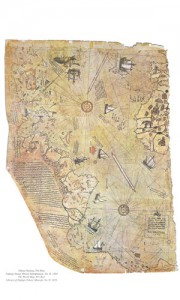
Antarctic: human settlement and pyramid under ice
 1
1
 22. 12. 2023
22. 12. 2023

NASA recently released photos of a remote sensing survey in Antarctica. An operation called IceBridge led to a fascinating discovery. The images revealed the possible existence of an ancient human settlement under a 2,3 km layer of ice.
A surprising discovery was made by NASA during tests of the ATLAS (Advanced Topographic Laser Altimeter System) lidar, which is to be part of the ICESat-2017 satellite for monitoring changes in the polar ice from 2.
"The probability of deviation or error is very small for individual photons hitting the optical fiber. That's why we were so surprised to notice these anomalies in the lidar images, ”explains Nathan Borrovitz, one of the scientists involved in the IceBridge project at the Goddard Space Flight Center in Greenbelt, Maryland.
"For now, we can only argue about what these results mean. The launch of ICESat-2 in 2017 could lead to further major discoveries and a better understanding of the geomorphology of Antarctica, ”adds Borrovitz.
Human settlement buried by 2,3km under ice
Lead archaeologist Ashoka Tripathi of the Archaeological Institute of the University of Calcutta believes that the images clearly show an ancient human seat under a layer of ice.
"It's obviously similar to man-made pyramid-like structures. The pattern certainly does not show any geomorphological formation occurring in nature. We are looking at evidence of human activity. The only problem is that the photos capture the surface of Antarctica 2 km under the ice. That's the mystery. And we have no explanation for her at the moment, "admits Tripathy.
 Remnants of a destroyed civilization
Remnants of a destroyed civilization
Cambridge University historian and cartographer Cristopher Adam believes there is a logical explanation: “One of the most mysterious maps in human history is the 1513 map of Turkish Admiral Piri Reis, which shows the Antarctic coast without ice. The ice-covered coast of Antarctica was not captured until 1958 after the invention of georadar. Is it possible that Antarctica is not always covered with ice? This could be proof that this possibility exists. The only rational explanation may be to shift the poles or deflect the earth's axis. But before we come to a conclusion, we have to examine the whole thing. "
The launch of ICESat-2 (Ice, Cloud, and Land Elevation Satellite 2), part of NASA's Earth observation system, is scheduled for May 2017. The satellite will measure ice thickness, the edge of glaciers. as well as the earth's surface and vegetation.





